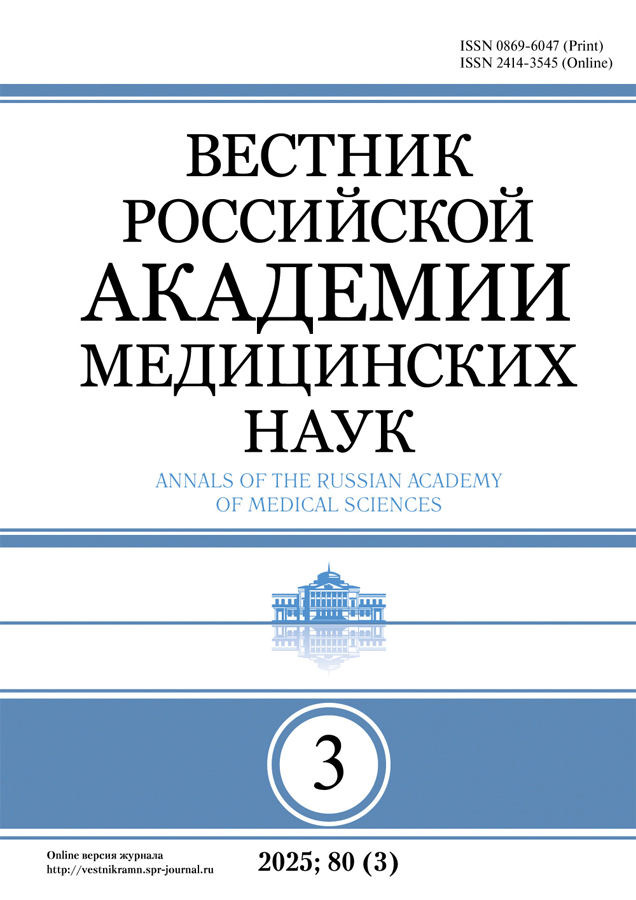THE STRUCTURE OF PHARMACOTHERAPY OF ARTERIAL HYPERTENSION AND ADHERENCE IN YOUNG PATIENTS
- Authors: Tuleutayeva R.Y.1, Musina A.Y.1, Cebotarenko N.A.2, Makhatova A.R.1
-
Affiliations:
- Semey State Medical University
- Coalition on Rational Drug Use, World Health Organization
- Issue: Vol 72, No 6 (2017)
- Pages: 428-434
- Section: CARDIOLOGY AND CARDIOVASCULAR SURGERY: CURRENT ISSUES
- Published: 22.11.2017
- URL: https://vestnikramn.spr-journal.ru/jour/article/view/860
- DOI: https://doi.org/10.15690/vramn860
- ID: 860
Cite item
Full Text
Abstract
Aim: To determine the indicators of adherence to drug therapy in young patients with arterial hypertension (АН) and the correlation between the indicators and therapy management.
Materials and methods: The study enrolled 514 patients aged 25 to 45 years diagnosed with essential hypertension. We studied the structure of antihypertensive pharmacotherapy and adherence to treatment using the Moriski−Green test and the original questionnaire. The patients were distributed depending on the degree of blood pressure increase, administered treatment, age, economic factor, and drug source.
Results: The adherence level by Moriski−Green test was 36.8%; according to the original questionnaire: high adherence level was 38.3%, incomplete adherence ― 33.7%, and poor adherence ― 28.0%. The monotherapy with ACE inhibitors predominated in the majority of cases; the fixed combinations were more typical for the treatment of the stage II AH, drug combinations ― for stage III AH. The highest therapy adherence was registered in patients with stage III AH receiving treatment with combinations of drugs in a single dosage form. The life quality of respondents and the drug source did not influence the adherence significantly.
Conclusion: In young patients with arterial hypertension, some features of treatment structure determine the therapy adherence.About the authors
R. Ye. Tuleutayeva
Semey State Medical University
Email: raikhan65@mail.ru
ORCID iD: 0000-0002-0462-5230
Semey Kazakhstan
A. Ye. Musina
Semey State Medical University
Author for correspondence.
Email: musina_med@mail.ru
ORCID iD: 0000-0002-0114-5397
Semey Kazakhstan
N. A. Cebotarenko
Coalition on Rational Drug Use, World Health Organization
Email: corsumnews@gmail.com
ORCID iD: 0000-0003-4619-4421
Chisinau
Moldova, Republic ofA. R. Makhatova
Semey State Medical University
Email: asem_ram@mail.ru
ORCID iD: 0000-0003-4127-7279
Semey Kazakhstan
References
- Shin J, Park JB, Kim KI, et al. 2013 Korean Society of Hypertension guidelines for the management of hypertension: part I-epidemiology and diagnosis of hypertension. Clin Hypertens. 2015;21:1. doi: 10.1186/s40885-014-0012-3.
- Steffen HM. [Epidemiology of hypertension: prevalence, awareness and treatment. (In German).] MMW Fortschr Med. 2016;158(17):63–70. doi: 10.1007/s15006-016-8781-0.
- Battistoni A, Canichella F, Pignatelli G, et al. Hypertension in young people: epidemiology, diagnostic assessment and therapeutic approach. High Blood Press Cardiovasc Prev. 2015;22(4):381–388. doi: 10.1007/s40292-015-0114-3.
- Dalal J, Sethi KK, Kerkar PG, et al. Vascular disease in young Indians (20-40 years): role of hypertension. J Clin Diagn Res. 2016;10(8):OE01–06. doi: 10.7860/JCDR/2016/20204.8258.
- Tavares NU, Bertoldi AD, Mengue SS, et al. Factors associated with low adherence to medicine treatment for chronic diseases in Brazil. Rev Saude Publica. 2016;50(suppl 2):10s. doi: 10.1590/ S1518-8787.2016050006150.
- Khayyat SM, Khayyat SM, Hyat Alhazmi RS, et al. Predictors of medication adherence and blood pressure control among Saudi hypertensive patients attending primary care clinics: a crosssectional study. PLoS One. 2017;12(1):e0171255. doi: 10.1371/ journal.pone.0171255.
- Лукина Ю.В., Марцевич С.Ю., Кутишенко Н.П. Шкала Мориски-Грина: плюсы и минусы универсального теста, работа над ошибками // Рациональная фармакотерапия в кардиологии. ― 2016. ― Т.12. ― №1 ― С. 63–65. [Lukina YuV, Martsevich SYu, Kutishenko NP. The Moriscos-Green scale: the pros and cons of universal test, correction of mistakes. Rational pharmacotherapy in cardiology. 2016;12(1):63–65. (In Russ).]
- Гланц С. Медико-биологическая статистика. Пер. с англ. ― М.: Практика; 1998. ― 459 с. [Glants S. Mediko-biologicheskaya statistika. Translated from English. Moscow: Praktika; 1998. 459 p. (In Russ).]
- Козловский В.И., Симанович А.В. Приверженность к терапии у пациентов с артериальной гипертензией II степени. Обзор литературы и собственные данные // Вестник Витебского государственного медицинского университета. ― 2014. ― Т.13. ― №2 ― С. 6–16. [Kozlovskii VI, Simanovich AV. Priverzhennost’ k terapii u patsientov s arterial’noi gipertenziei II stepeni. Obzor literatury i sobstvennye dannye. Vestnik VGMU. 2014;13(2):6–16. (In Russ).]
- Lotsch F, Auer-Hackenberg L, Groger M, et al. Adherence of patients to long-term medication: a cross-sectional study of antihypertensive regimens in Austria. Wien Klin Wochenschr. 2015;127(9– 10):379–384. doi: 10.1007/s00508-015-0782-y.
- Johnson HM, Warner RC, Bartels CM, LaMantia JN. “They’re younger... it’s harder.” Primary providers’ perspectives on hypertension management in young adults: a multicenter qualitative study. BMC Res Notes. 2017;10(1):9. doi: 10.1186/s13104-016-2332-8.
- Cunningham CT, Sykes LL, Metcalfe A, et al. Ethnicity and health literacy: a survey on hypertension knowledge among Canadian ethnic populations. Ethn Dis. 2014;24(3):276–282.
- Шальнова С., Кукушкин С., Маношкина Е., Тимофеева Т. Артериальная гипертензия и приверженность терапии // Врач. ― 2009. ― №12 ― С. 39–42. [Shalnova S, Kukushkin S, Manoshkina E, Timofeyeva T. Arterial hypertension and therapy adherence. Vrach. 2009;(12):39–42. (In Russ).]
Supplementary files








